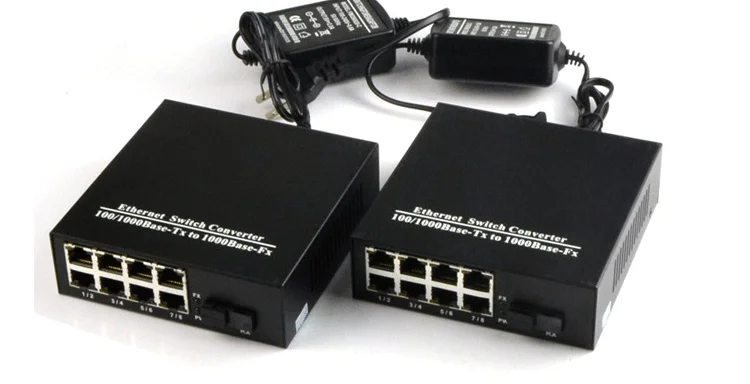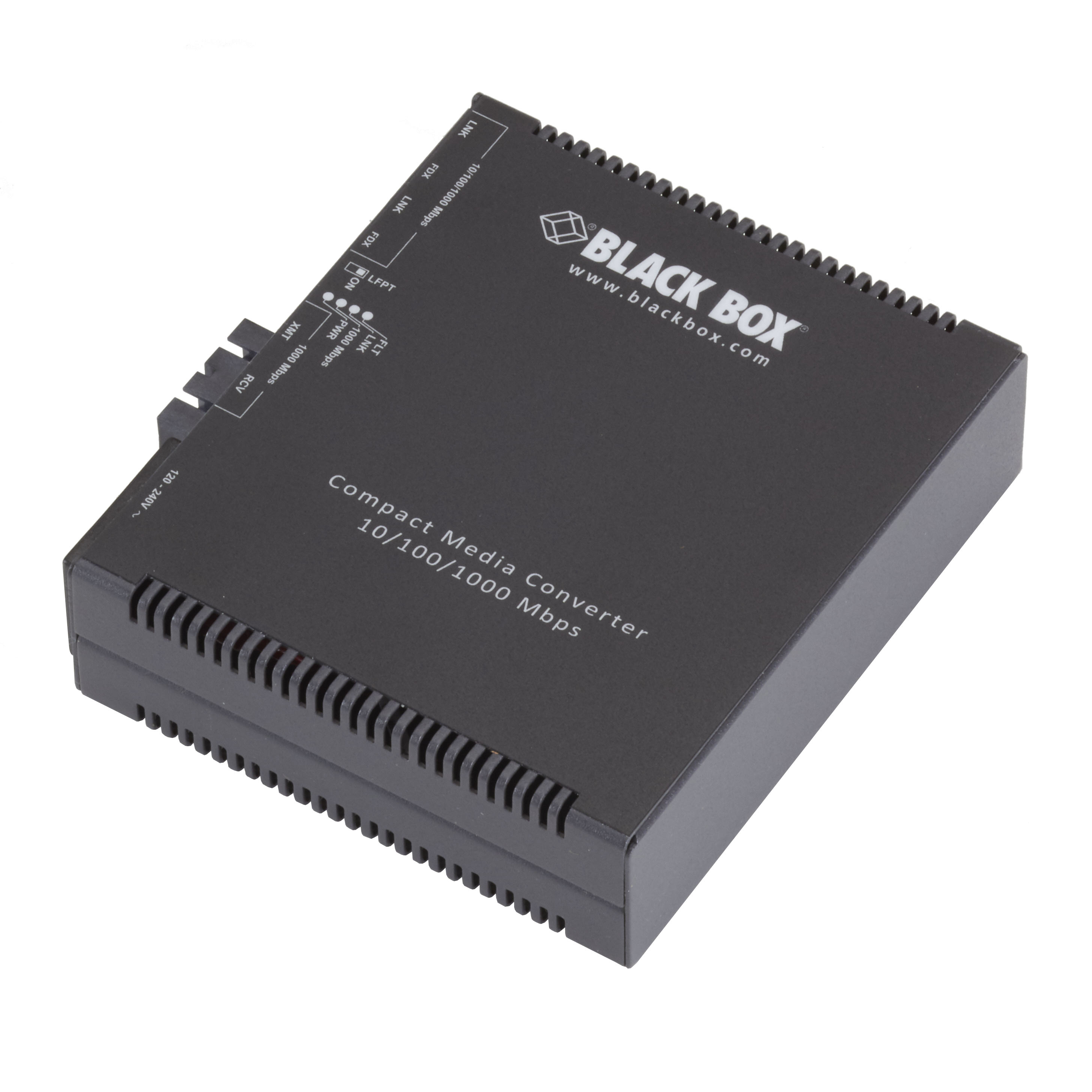


If the TP LINK port is still off when Ethernet port is connected, we need to check: When the Media Converter’s Ethernet port is connected, the TP LINK LED light will go on, as shown in the picture below. Q1: What can I do if the TP LINK is not on then the Ethernet port is connected? In application scenario 2, connect the Ethernet port to the switch’s port or other Ethernet devices with the Ethernet cable, and then connect the fiber port to the SFP module or other fiber devices with the proper fiber. For example, the Gigabit SFP module can only work with 1000Mbps SFP port.Ģ.

Black box corp fast ethernet media converter professional#
Q4: What can I do if the LED is off after the connection?ġ)For multi-mode SFP module, we can check the red laser on both sides as we explained above for single-mode SFP module, you can check by using some professional Fiber-Optical Testers. But for single-module devices, we cannot see such phenomenon because the wave length of the single- mode is out of the range of the visible light. And when we plug the fiber, we can also see the red laser from the end of the fiber that connected to the Tx port. Q3: How can I judge the SFP module is working with the switch?įor multi-mode SFP module, since the wave length of the multi-mode in the range of visible light, we can see the red laser from the Tx port when we plug the SFP module into the SFP slot. When we connect the SFPs, we need to make sure the Tx and Rx are matched on both sides, which means Tx Rx, Rx Tx. On the SFP module, you can see two triangles as is noted in the picture below, the pole towards outside means Tx (Transmit) port while the pole towards inside means Rx (Receive) port. Q2: How can I tell the RX & TX port of the SFP module? Only when all the connection is OK can the ports’ LED lights go on. The status of the LED has no any change when we plug the SFP module only.

Q1: Why the LED of the SFP slot isn’t on after plugging the SFP module? In application scenario 1, plug the suitable SFP modules into the SFP slots and then connect them with the proper fiber, then the connection should be OK. With our TP-Link fiber products, we have the following three kinds of application scenarios generally:ġ. Hardware switches: the mode (Auto/Manual) of the Media Converter the LFP function, and etc.Connection checking: the matching of the Rx & Tx the red laser of the multi-mode devices.Basic checking: LED status the suitable fiber/Ethernet cable the wave length and the mode (multi/single) the speed, and etc.The checking include but not limited to the following three aspects: When the connection does not work as expected after we set it up according to the Installation Guide, we need to do some troubleshooting. The SFP/Media Converter are designed for easy use for optical fiber transmission.


 0 kommentar(er)
0 kommentar(er)
